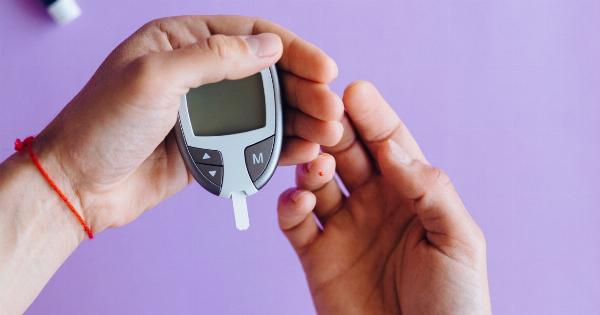Glucagon is a hormone produced by the alpha cells of the pancreas that plays a vital role in regulating blood sugar levels.
It acts in opposition to insulin, promoting the release of stored glucose from the liver and increasing blood sugar levels when needed.
Liglutide and its Mechanism of Action
Liglutide is a medication commonly prescribed to individuals with type 2 diabetes. It belongs to a class of drugs known as glucagon-like peptide 1 (GLP-1) receptor agonists.
Liglutide mimics the effects of the natural incretin hormone GLP-1, which enhances insulin secretion, reduces glucagon release, and slows down gastric emptying.
Unexpected Spike in Glucagon Levels
Recent research studies have revealed an unexpected phenomenon associated with the use of liglutide in some individuals.
It has been observed that liglutide can cause an abnormal spike in glucagon levels, leading to a paradoxical increase in blood sugar levels.
Understanding the Mechanism
The exact mechanism underlying this unexpected spike in glucagon levels is not yet fully understood. However, researchers have proposed several hypotheses to explain this phenomenon.
Hypothesis 1: GLP-1 Resistance
One hypothesis suggests that the body may develop resistance to the effects of GLP-1 over time, leading to a loss of its ability to suppress glucagon release.
This would result in a rebound increase in glucagon levels, counteracting the intended glucose-lowering effects of liglutide.
Hypothesis 2: Altered Alpha Cell Function
Another hypothesis focuses on the potential impact of liglutide on the alpha cells of the pancreas, which are responsible for producing glucagon.
It is suggested that liglutide may directly affect the function of these cells, leading to an abnormal increase in glucagon secretion.
Hypothesis 3: Indirect Effects on Glucagon
Some researchers propose that liglutide’s impact on other hormones or signaling pathways may indirectly affect glucagon levels.
For example, liglutide has been shown to delay gastric emptying, which could potentially alter nutrient availability and lead to changes in glucagon release.
Clinical Implications
Understanding and managing the unexpected spike in glucagon levels caused by liglutide is of significant clinical importance.
If left unaddressed, this phenomenon could compromise glycemic control and potentially worsen the outcomes for individuals with type 2 diabetes.
Screening and Monitoring
Physicians and healthcare providers prescribing liglutide should be aware of the possibility of increased glucagon levels and its potential consequences.
It is crucial to screen individuals for any existing abnormalities in glucagon levels and closely monitor these levels during liglutide therapy.
Management Strategies
To mitigate the impact of liglutide-induced glucagon elevation, various management strategies can be employed. These may include.
1. Dose Adjustment
Optimizing the dosage of liglutide may help minimize the spike in glucagon levels.
A lower starting dose or titration with careful monitoring of glucagon levels can be considered to find the optimal balance between glycemic control and potential glucagon elevation.
2. Combination Therapy
Combining liglutide with other antidiabetic medications can be explored as an option to offset the glucagon increase.
The addition of medications with complementary mechanisms of action, such as dipeptidyl peptidase-4 (DPP-4) inhibitors or sodium-glucose cotransporter 2 (SGLT-2) inhibitors, may help counterbalance the unexpected glucagon surge.
3. Close Monitoring
Regular monitoring of glucagon levels, as well as blood sugar levels, should be implemented for individuals undergoing liglutide therapy.
This will help identify any early signs of glucagon elevation and facilitate timely intervention to prevent potential adverse effects.
Conclusion
Liglutide, a commonly prescribed medication for type 2 diabetes, has been associated with an unexpected spike in glucagon levels in some individuals.
The exact mechanism underlying this phenomenon is yet to be fully understood, but several hypotheses have been proposed. Recognizing the clinical implications of liglutide-induced glucagon elevation is crucial for effectively managing the glycemic control of affected individuals.




























